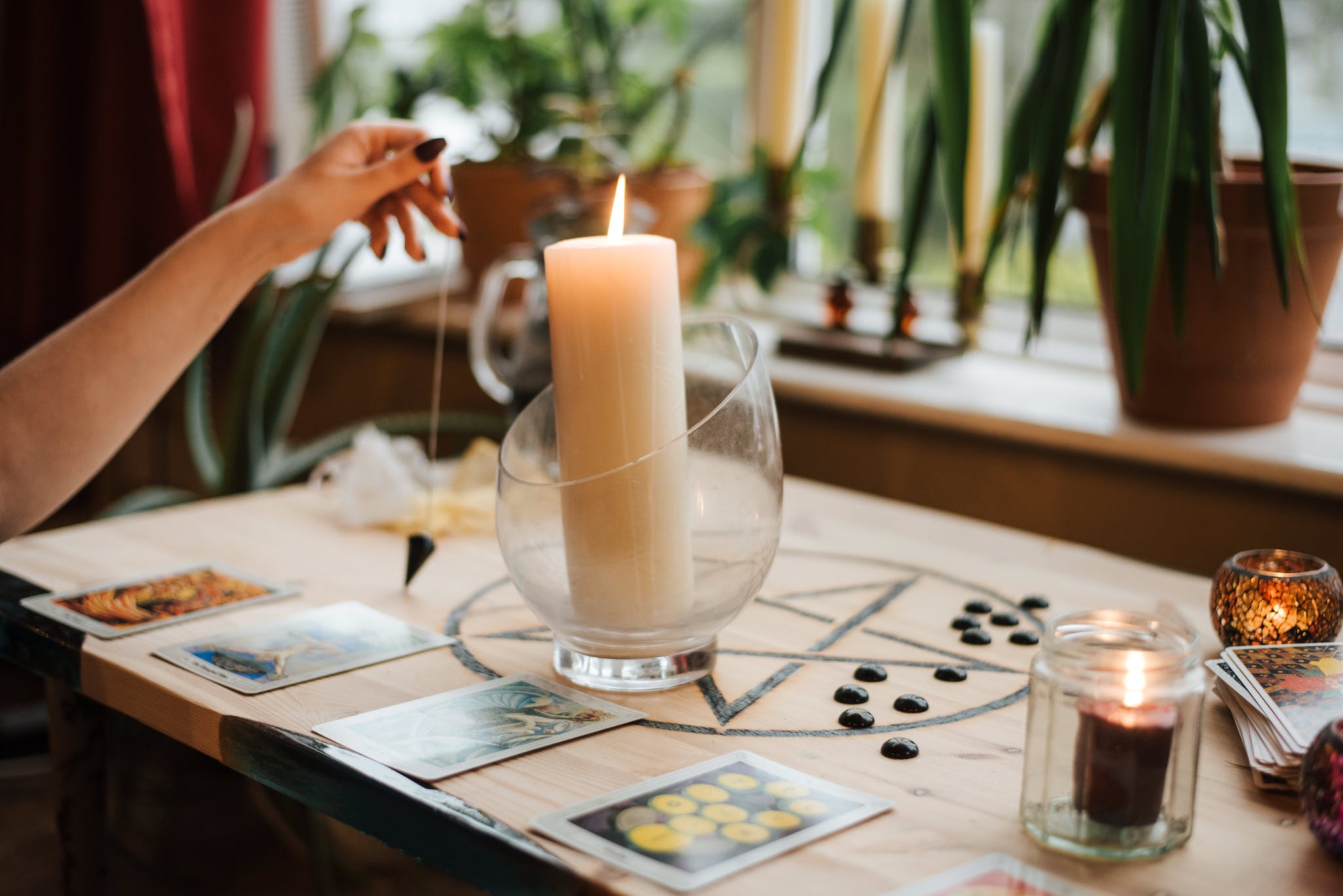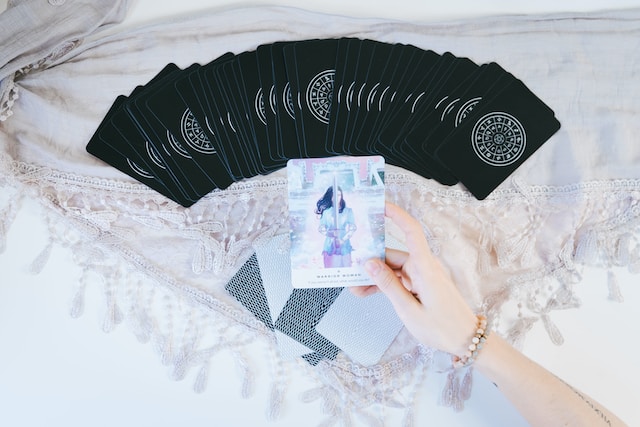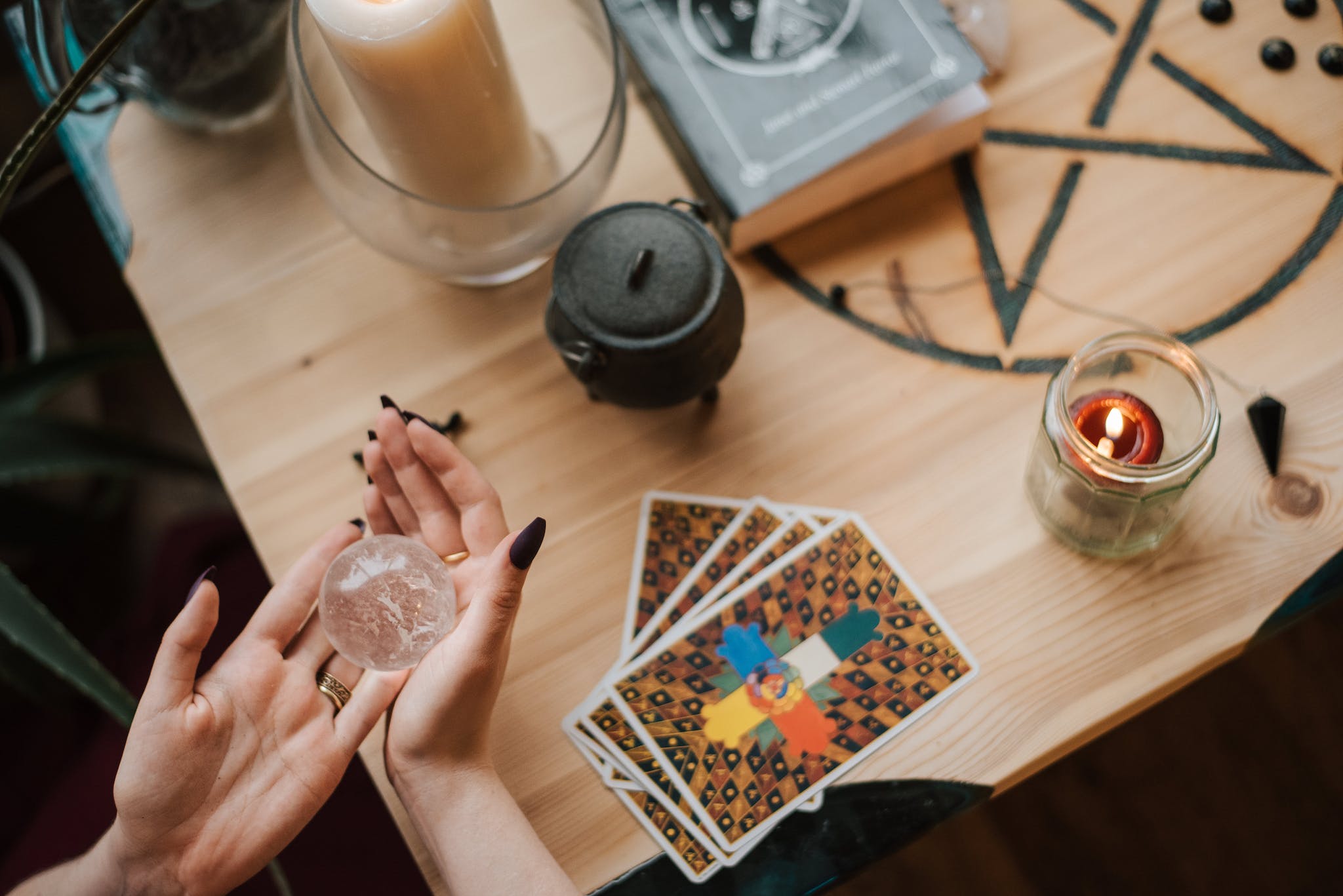How to Connect with Your New Tarot Cards
There are some affiliate links below, but they are all products I highly recommend. For more info, view my disclosure here.
Connecting with your tarot cards can be a deeply personal and spiritual experience. Whether you are a seasoned tarot reader or just starting out, building a strong connection with your deck is essential for accurate readings and intuitive insight. In this article, we will explore some tips and techniques for connecting with your tarot cards on a deeper level.
First and foremost, it is important to choose a deck that resonates with you. There are countless tarot decks available, each with their own unique artwork and symbolism. Take the time to browse different decks and choose one that speaks to you on a personal level. When you connect with your deck on a visual and emotional level, it can enhance your readings and make the experience more meaningful.
Once you have chosen a deck, it is important to spend time getting to know each card individually. Take time to study the artwork and symbolism, and reflect on how each card relates to your own life experiences. You may also want to create a special space for your tarot practice, such as a dedicated altar or meditation area. By creating a sacred space for your tarot practice, you can enhance your connection with your deck and deepen your spiritual practice.
Getting Started with Your New Tarot Deck
If you’re new to tarot, selecting your first deck can be an exciting yet daunting task. There are hundreds of decks available, each with its own unique style and symbolism. Here are some tips to help you choose the perfect deck for you.
Choosing Your First Deck
When selecting your first deck, it’s important to choose one that resonates with you. Take some time to research different decks online or in a bookstore. Look at the artwork and see if it speaks to you.
Consider the theme, style, and symbolism of the deck. Some decks may have a more traditional feel, while others may have a more modern or eclectic style. You want to pick a deck that will give you a positive experience when using your new tarot cards.
Once you’ve selected your deck, take some time to get to know it. Look through your new cards and familiarize yourself with the imagery and symbolism. You may also want to read the accompanying guidebook or do some research online to gain a deeper understanding of the cards.
Understanding the Major and Minor Arcana
The tarot deck is divided into two main sections: the Major Arcana and the Minor Arcana. The Major Arcana consists of 22 cards, each representing a major life lesson or archetype. These cards are often seen as the most important cards in the deck and can provide insight into major life events or themes.
The Minor Arcana consists of 56 cards, divided into four suits: Wands, Cups, Swords, and Pentacles. Each suit represents a different aspect of life, such as emotions, thoughts, or material possessions. The Minor Arcana cards can provide insight into everyday situations and events.
When working with your tarot deck, it’s important to understand the symbolism and meaning behind each card. Take some time to study the cards and consider their meanings in relation to your own life experiences. With practice and patience, you can develop a deeper connection with your tarot deck and gain valuable insights into your life.
Creating a Connection with Your Cards
When it comes to tarot readings, the connection between you and your deck is essential. Establishing a strong bond with your cards can help you interpret the messages they convey accurately. Here are some tips to help you create and maintain a connection with your tarot deck.
Cleansing and Clearing Your Deck
Before you start using your tarot deck, it’s essential to cleanse and clear it of any negative energy. You can do this by holding the deck in your hands and visualizing white light surrounding it. You can also use clear quartz to amplify the energy and remove any negativity.
Another way to cleanse your deck is by smudging it with sage or palo santo. Simply light the sage or palo santo stick and pass the deck through the smoke. This will help remove any negative energy and purify the deck.
The Significance of Daily Draws
Drawing a card every day can help you establish a connection with your tarot deck. It’s a great way to get to know the cards and their meanings. When you draw a card, take a few moments to reflect on its message and how it applies to your life.
You can also keep a tarot journal to record your daily draws and interpretations. This will help you track your progress and see how your understanding of the cards evolves over time. This is a great practice to start early in your journey.
Establishing a connection with your tarot deck is crucial for accurate readings. By cleansing and clearing your deck and drawing a card every day, you can create a strong bond with your cards and gain a deeper understanding of their messages.
Developing Your Tarot Reading Skills
If you are interested in tarot reading, it is important to develop your skills to better understand the cards and their meanings. Here are a few tips to help you improve your tarot reading skills.
Learning Different Spreads
One of the most important aspects of tarot reading is learning different spreads. A spread is a specific layout of cards that is used to answer a particular question or provide insight into a certain area of life. There are many different spreads to choose from, each with its own unique purpose.
To start, you may want to learn the three-card spread, which is a simple spread that can be used for a quick reading. As you become more comfortable with tarot reading, you can move on to more complex spreads, such as the Celtic Cross or the Tree of Life spread.
Keeping a Tarot Journal
Keeping a tarot journal is a great way to track your progress and better understand the cards In your journal, you can record your readings, the spreads you used, and any insights or interpretations you had. This is a
You can also use your journal to write down any questions you have about the cards or to reflect on your experiences with tarot reading. This can help you develop a deeper understanding of the cards and their meanings.
In addition, keeping a tarot journal can help you identify patterns or themes in your readings, which can provide valuable insights into your life and the world around you.
By learning different tarot spread and keeping a tarot journal, you can improve your tarot reading skills and gain a better understanding of the cards and their meanings. With practice and dedication, you can become skilled tarot readers and use the cards to gain insights and guidance in your life.
Enhancing Intuition and Interpretation
Meditation and Mindfulness Practices
Meditation and mindfulness practices can help you connect with your inner self and enhance your intuition. Before you start your tarot reading, take a few deep breaths and clear your mind. This will help you focus on the cards and connect with your intuition. You can also try meditating for a few minutes before your reading to help you relax and get in the right mindset.
During your reading, try to stay present and focused on the cards. Avoid distractions and stay mindful of your thoughts and feelings. If you find your mind wandering, take a deep breath and bring your attention back to the cards.
Exploring the Meaning of the Cards
Understanding the meaning of the cards is essential for interpreting your tarot reading. Each card has its own symbolism and interpretation, and it’s important to familiarize yourself with them. You can use a tarot guidebook or online resources to learn more about the cards.
When interpreting the cards, try to use your intuition and trust your gut feelings. Pay attention to the images and symbols on the cards and how they make you feel. Don’t be afraid to use your own interpretation of the cards, as long as it feels authentic to you.
Enhancing your intuition and interpretation skills can help you connect with your tarot cards and improve your readings. By incorporating meditation and mindfulness practices and exploring the meaning of the cards, you can deepen your understanding of the tarot and gain valuable insights into your life.
Integrating Tarot into Daily Life
Tarot can be a powerful tool for self-reflection and personal growth, but it can also be a fun and interesting way to connect with others on social media. Here are a few ways to integrate tarot into your daily life:
Tarot as a Tool for Self-Reflection
One way to use tarot is to incorporate it into your daily practices. At the end of the day, take a few minutes to pull a card and reflect on its meaning. This can help you gain new insights into your day and your emotions.
You can also use tarot to explore specific questions or issues that you’re struggling with. Before bed, take some time to shuffle your deck and ask a question. Pull a card and spend some time reflecting on its meaning. This can help you gain clarity and perspective on the issue.
Sharing Your Readings on Social Media
Another way to integrate tarot into your daily life is to share your readings on social media. This can be a fun and interesting way to connect with others who are interested in tarot.
When sharing your readings, be sure to include a brief description of the card and its meaning. You can also share any insights or thoughts that came up during your reading.
Remember that tarot is a personal tool, so don’t feel like you have to share every reading you do. Only share what feels comfortable and authentic to you.
By incorporating tarot into your daily life, you can gain new insights into yourself and connect with others who share your interest in this powerful tool.
Advanced Techniques and Practices
Tarot Deck Interviews
One way to deepen your connection with your tarot cards is to interview them. This technique involves asking your deck questions about itself, such as its personality, strengths, and weaknesses. To do this, shuffle your deck and draw three cards. Use these cards to answer the following questions:
- What is your personality?
- What are your strengths?
- What are your weaknesses?
Write down the answers and reflect on them. This exercise can help you understand your deck on a deeper level and improve your readings.
Shadow Work with Tarot
Tarot can be a powerful tool for shadow work, which involves exploring and integrating your unconscious thoughts and emotions. To use tarot for shadow work, choose a card that represents a part of yourself that you struggle with or want to explore. For example, if you struggle with anger, you might choose the Five of Wands.
Study the card and reflect on how it relates to your life. Write down your thoughts and feelings, and use the card as a focal point for meditation or visualization. This practice can help you gain insight into your shadow self and work towards healing and integration.
Remember that tarot is a spiritual tool that can help you connect with your intuition and higher self. Use these advanced techniques and practices to deepen your relationship with your deck and enhance your readings.
Caring for Your Tarot Deck
As you begin to connect with your tarot cards, it’s important to take good care of them. By treating your deck with respect and care, you can help ensure that it remains a powerful tool for divination and self-discovery.
Storing and Handling Your Cards
One of the most important things you can do to care for your tarot deck is to store it properly. When you’re not using your cards, keep them in a safe and secure place where they won’t be damaged or exposed to too much light or moisture. Many tarot enthusiasts like to keep their decks in a special bag or box to protect them.
When you’re handling your cards, be sure to do so gently and with clean hands. Avoid bending or creasing the cards, and try not to touch the surfaces of the cards too much, as this can cause wear and tear over time. Some people prefer to wear white cotton gloves when handling their decks to keep them clean and protected.
When to Retire an Old Deck
Over time, your tarot deck may begin to show signs of wear and tear. This can include things like faded or damaged cards, a worn-out texture, or a general feeling of disconnection when you use the deck. When this happens, it may be time to retire your old deck and invest in a new one.
However, before you retire your deck, take some time to reflect on your relationship with it. Has it served you well over the years? Have you learned valuable lessons from it? If so, consider giving it a proper send-off by thanking it for its service and finding a special way to honor it.
By taking good care of your tarot deck and knowing when it’s time to retire an old one, you can ensure that your cards remain a valuable tool for years to come. Whether you prefer to riffle shuffle, use a sacred space for your readings, or simply enjoy the texture of the cards, treating your deck with care and respect is key to building a strong and meaningful connection with it.




